STORE AUCTIONS ALL SPECIMENS ON SALE MINERALS ACCESSORIES BOOKSTORE RULES REGISTER LOGIN ABOUT US CONTACT US MAILING
SPECIMENS
now available:
Day 8
After breakfast we packed our cars and drove to Zazafotsy village to visit the Amboarohy corundum quarry. It’s a famous locality for sapphire and ruby forming nice crystals in metamorphic schist. We had to walk up the hill to get there, and it was a pretty long walk in full sun. On the way we encountered a kind of obstacle – local people have a rather unwise habit of burning dry grass during dry season, so part of the group didn’t make it to the quarry because they were stopped by the fire. The part of the group that did get to the quarry found a few nice crystals in matrix – although they were temporarily cut off from the main group, and their escape route by the fire. After the fire moved away we got back to the cars, got lunch packs and drove to Ranohira village, and after some shopping there we drove to our hotels located just outside of Isalo National Parkwhere we stayed for the next 2 nights, – Relais de la Reine and Le Jardin du Roy, two very beautiful and luxurious hotels. We stayed in comfy bungalows placed in the scenic area between the rocks. They were in the same area so it was easy to walk from one hotel to another. We had a great dinner in Relais de la Reine hotel restaurant with live music. People got back to their rooms quite early - the program of the Conference was pretty intense so most of the people were tired.
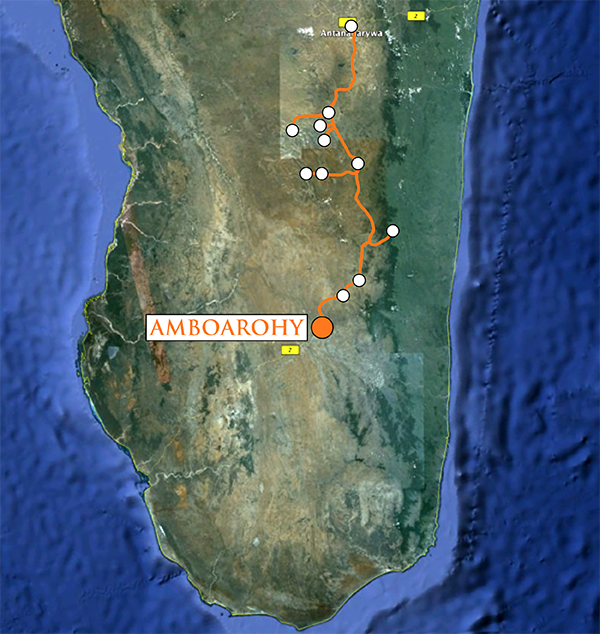
Next day we drove to Zazafotsy village area to visit famous corundum mine Amboarohy. Google Maps.
On the way to Zazafotsy. J. Rakovan photo.

Location of the quarry, it is much further than it looks! T. Praszkier photo.
Parking cars and we are ready to go! M. Ng photo.
It was quite long walk in full sun. J. Rakovan photo.
It was quite long walk in full sun. L. Albin photo.
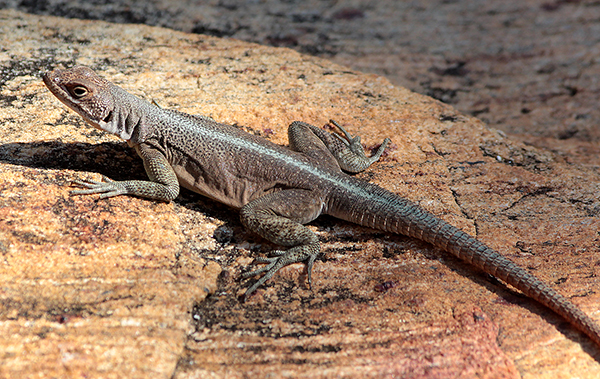
Lizard. R. Lang photo.
Hike to the locality was quite long and the day was very hot, many Mindaters decided to retourn. M. Ng photo.
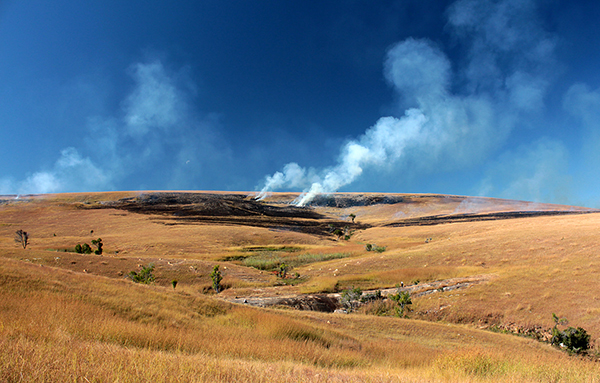
Moreover, savanna in the area of the mine was burning! R. Lang photo
Walking through the burned savanna. E. Petrides photo.
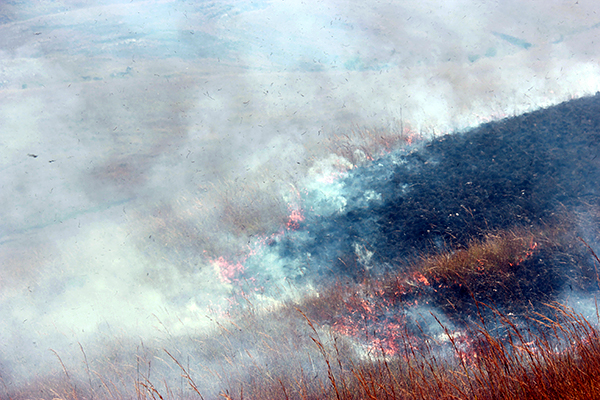
Burning savanna. R. Zeilstra photo.
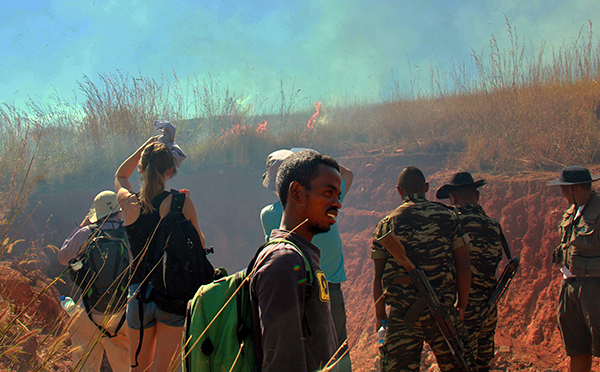
Grass was burning all around the quarry. R. Zeilstra photo.
Amboarohy corundum mine. L. Albin photo.
Evgenios in the mine looking for corundums. E. Petrides photo.
Dump very rich in garnets and corundum fragments M. Ng photo.
Sun and corundums made Miro completely crazy! M. Ng photo.
Garnet found in Amboarohy. E. Petrides photo.
Ruby in matrix. E. Petrides photo.
Nice ruby-sapphire crystal. M. Ng photo.

View from the mine. E. Petrides photo.
Miro with corundum and our security after coming back to the cars. M. Ng photo.
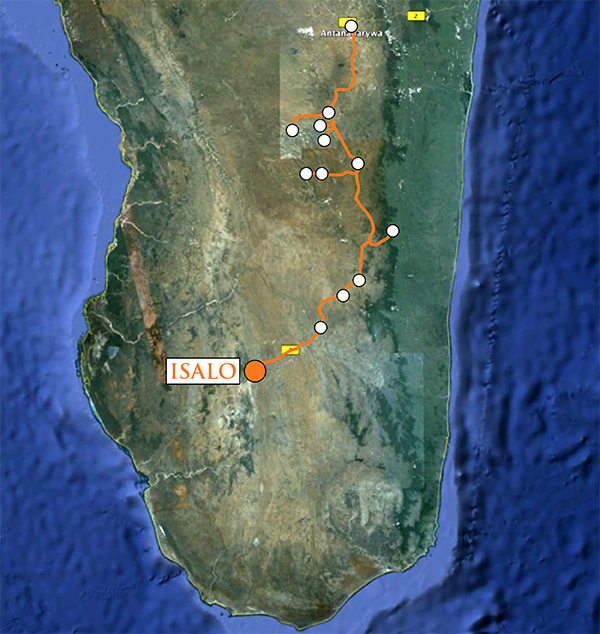
After visit in the mine we drove to the Isalo National Park area where we stayed 2 nights. Google Maps.
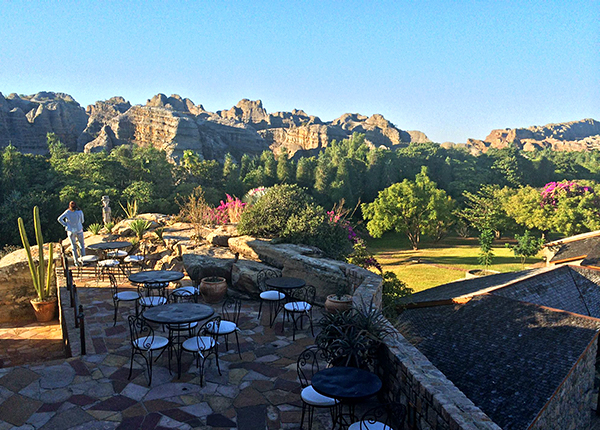
We stayed there in the best hotel during whole trip, located in a beautiful landscape. T. Praszkier photo.
We stayed there in the best hotel during whole trip, located in a beautiful landscape. L. Albin photo.
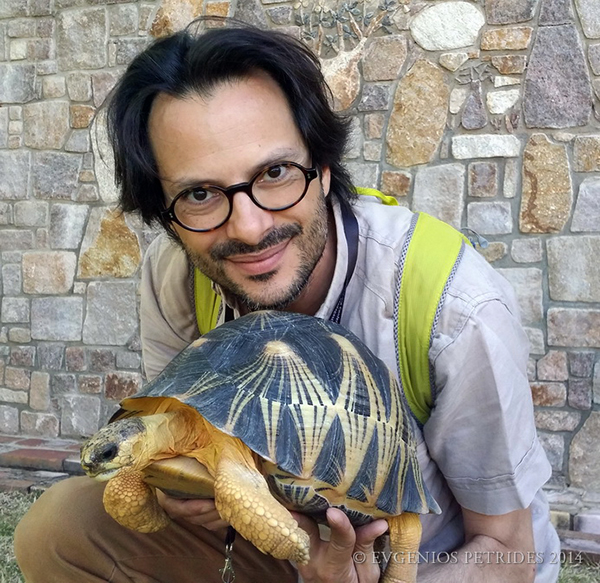
Evgenios with endemic Radiata tourtle. E. Petrides photo.
One of the bungalows in the hotel. E. Petrides photo.
That afternoon was great time to relax – Jeremy Fraser-Mitchell and Pu Tzu playing chess. E. Petrides photo.
Time for dinner. E. Petrides photo.
It was really good! M. Ng photo.
And later we could watch beautiful stars again. M. Ng photo.
Time to go to bed - not bad hmmm? E. Petrides photo.
Day 9
The whole day was spent in Isalo National Park. We started our walk at 9.15. Isalo is the combination of sandstone rocks eroded into weird shapes, rare endemic plants and animals, and dry weather. It is within these sandstones that the palioplacers that feed the modern corundum placers of Ilakaka are found. The original rocks in which the corundum formed were likely similar to those of the Amboarohy corundum deposit. The area is sacred for Bara tribe, where they use caves as a burial sites. Participants could choose different options of the trip, an easier or harder one. The walk took almost 7 hours. It was quite varied and interesting. We saw bush, jungle, savannah, rock formations with spectacular views, groups of lemurs, waterfalls, and natural swimming pools. It’s probably better to show all these on photos than describe them. We also had lunch prepared for us at a campsite in the park. A few ring-tails smelled the food and came to join! They came really close and were almost sitting on the cooker - a great opportunity to take good photos. After lunch we continued the walk to see one more waterfall, and then back to the cars, to get to the next point of our trip on time. It was Fenetre de Isalo – the Isalo Window, a rock with a hole where you can watch the sun going down. We spent an hour admiring the sunset and beautiful view of savannah, while having some local rum. After the sunset we got back to our hotels and after refreshing a bit we watched Frederico Pezzotta’s presentation about most interesting mineral localities on Madagascar. For a second night we had a wonderful French dinner at the Relais de la Reine. After dinner everybody repacked their luggage, because the cars were leaving us the next day for 3 days, and because we were going to take an internal flight, luggage needed to meet the airplane limits.
Next day we drove to the Isalo National Park entrance. E. Petrides photo.
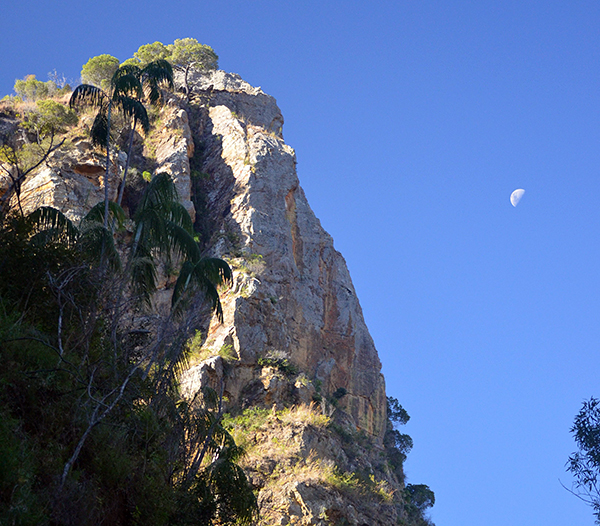
Morning moon with Isalo rocks. N. Anstee photo.
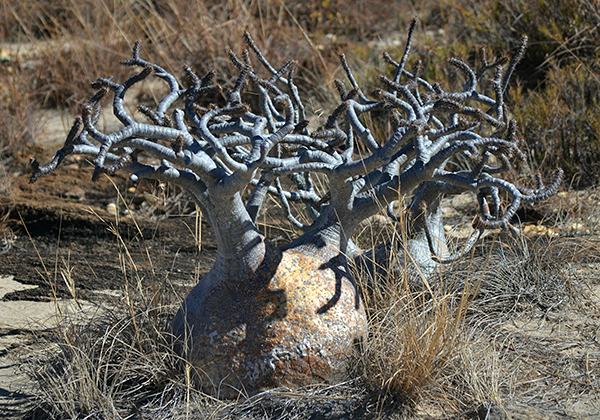
Endemic Elephant foot plant N. Anstee photo.
Endemic aloes species. M. Southwood photo.
Colorful spider. E. Petrides photo.
Small scorpion. E. Petrides photo.
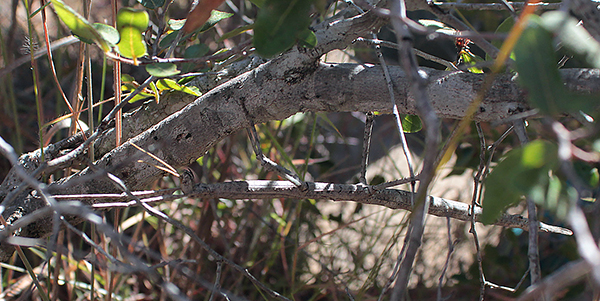
Can you find stick insect at this photo? R. Lang photo.
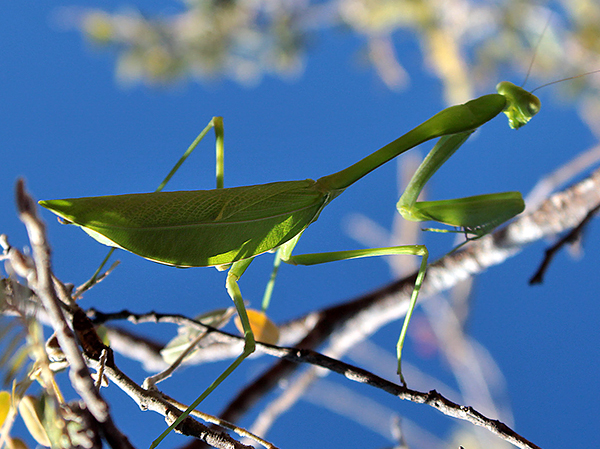
Praying mantis. R. Lang photo.
Huge and colorful grasshopper. E. Petrides photo.
What a color! M. Ng photo.

Famous landscapes of weathered rocks in Isalo Park. E. Petrides photo.
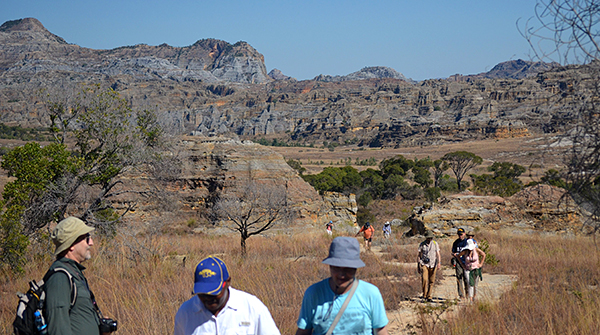
Walking through the amazing Triassic sandstones. N. Anstee photo.
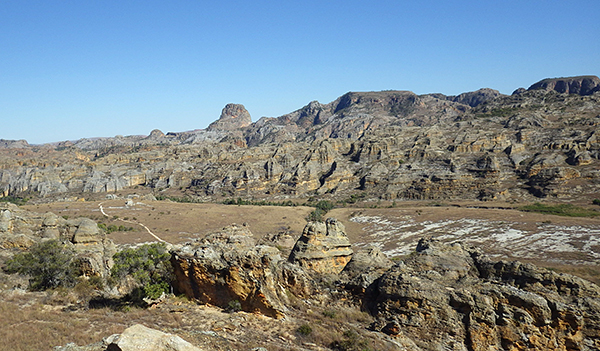
Isalo National Park. N. Anstee photo.
Isalo National Park. J. Rakovan photo.
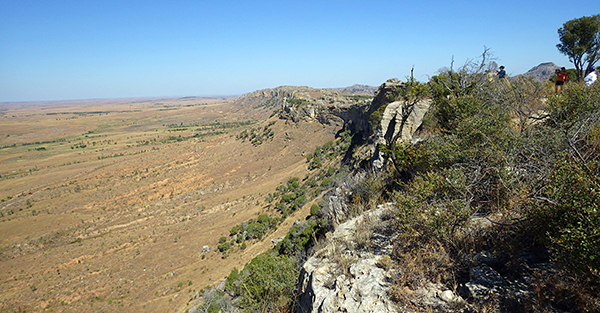
Big cliff in the Park. N. Anstee photo.
On the cliff. E. Petrides photo.
Ken taking some crazy photos ;-) E. Petrides photo.

View from the cliff. E. Petrides photo.
One of the groups walking through the Park. M. Ng photo.
There was lunch waiting for us in one of the camps. E. Petrides photo.
Lunch prepaired by local friends. E. Petrides photo.
And there was cold beer too! E. Petrides photo.
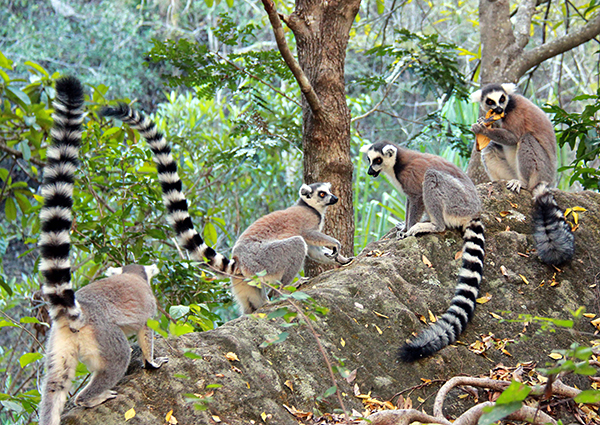
Catta lemurs very quickly figured out that there is FOOOOD! R. Zeilstra photo.
Catta lemurs begging for food. M. Ng photo.
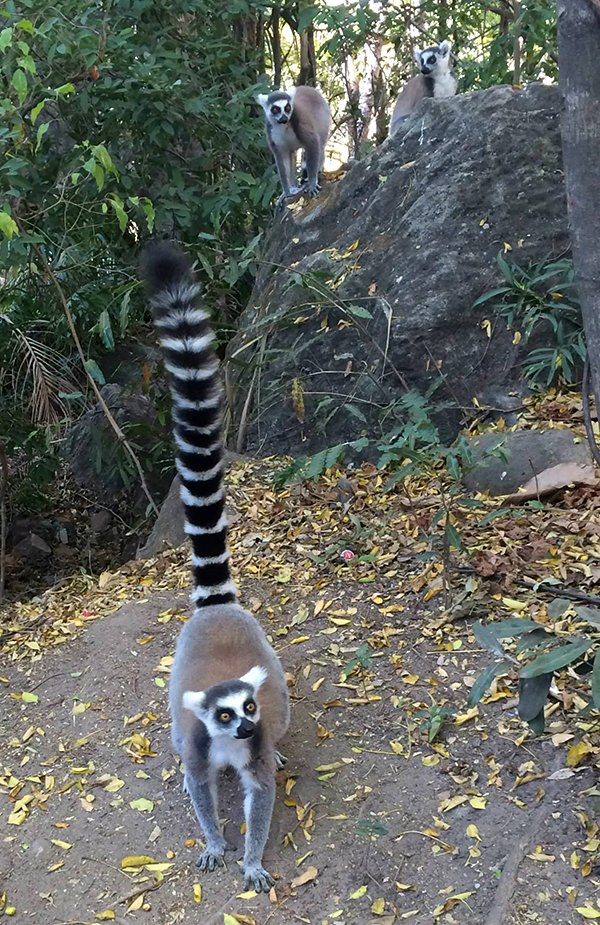
Catta lemurs begging for food. T. Praszkier photo.
Catta lemurs begging for food. M. Ng photo.
After lunch we visited small natural lakes in the gorge. E. Petrides photo.
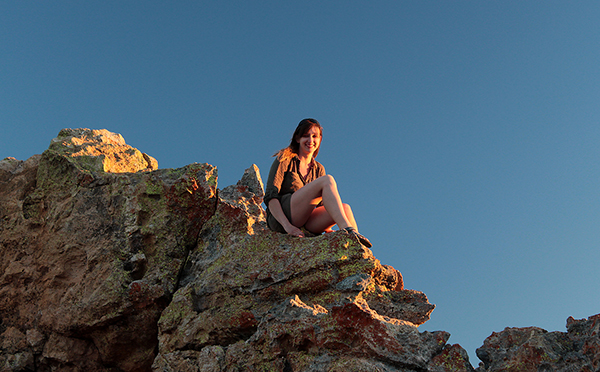
After visit in the Park we drove to see sunset in a very special place. R. Lang photo.
Of course we had some drinks with us including vanilla rum :-) E. Petrides photo.
The place is known as Isalo Window. E. Petrides photo.
Sunset at the Isalo Window. M. Ng photo.
Sunset at the Isalo Window. L. Albin photo.

Mindat crowd is taking photos :-) R. Lang photo.
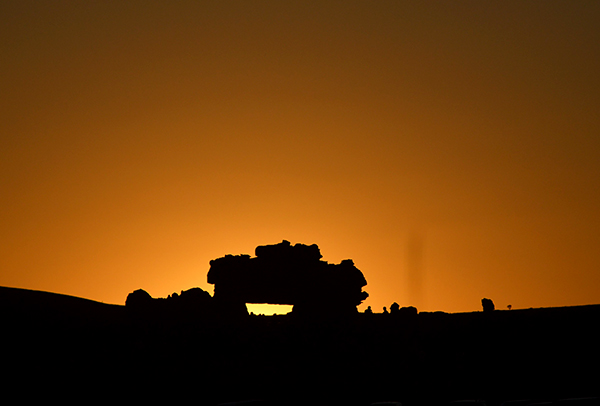
Sunset at the Isalo Window. N. Anstee photo.
After we returned to the hotel we had presentation by Federico Pezzotta. M. Ng photo.
He shared with us information about the recent and most important finds. M. Ng photo.
Federico`s presentation. M. Southwood photo.
Day 10
We checked out after breakfast and drove to Ilakaka village – one of the world’s biggest alluvial sapphire deposits. It’s Madagascar’s “wild west”. We visited workings – the mine is really huge and deep and it’s amazing that people dig it without using any advanced equipment. Most commonly the sapphires are pink, violet and yellow, blue ones are quite rare here. After that we visited some lapidary shops, where the participants bought some stones and jewelry. When everyone finished their shopping we got back to the cars and drove to the east visiting interesting traditional tombs with paintings of different scenes from life or from the movies. Around 1.30 pm we got to Tulear, a big town located on south, and first we visited the arboretum. That was a good place to see many endemic plants, typical only for southern Madagascar semi-desert climate, and also endemic radiated tortoises. From the arboretum we drove to Etoil de Mer in Tulear for lunch. After the lunch 4WD cars were leaving us, so we had a local “bus” rented. That was really a surprise for most of the participants! That was really African style, local “taxi-brousse”. We hardly fit in, even though our luggage was on the roof. Some people had more fun, some had less, but it was an interesting experience to drive bus on a bit of bumpy road for some 2 hours. We had a few bottles of rum to have more fun during the drive. Finally, when it was already dark, we got to the Nautilius Hotel on the coast. We were staying there for two nights to relax after several intense days. We were staying in bungalows just by the Mozambique Channel. In the evening we had a dinner with a lot of seafood, and after the dinner the party started. A local band – Bloco Malagasy – played for us. They were young girls playing drums, and they were amazing! The girls study at the NGO’s Center of Art and Music, and they’ve already done several national and international tours. That’s a great opportunity for girls from poor neighborhoods of Tulear to see the world and try different life. They started playing in the hotel restaurant and then we all moved with them to the beach where they continued their show by the bonfire next to the sea. We all had great fun. Even when they left, a group of the participants was still partying on the beach, having rum and punch, talking, singing, enjoying the bonfire, night sky and sound of the ocean till late in the night.
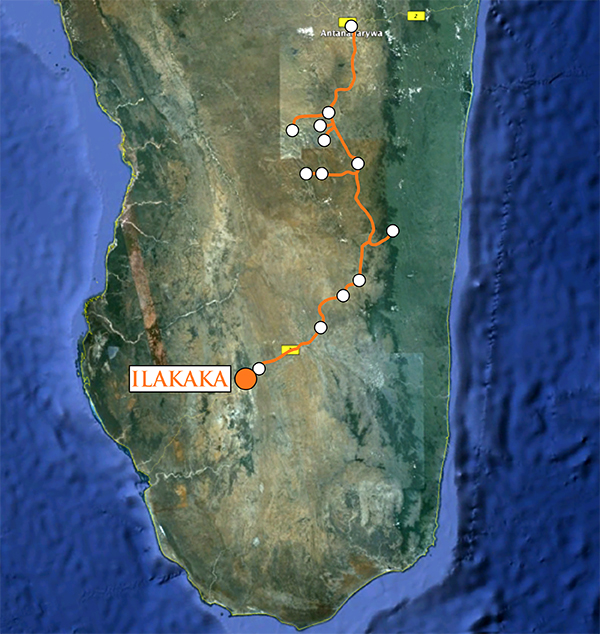
After leaving hotel (several people wanted to stay there it was so nice) we drove to nearby Ilakaka. Google Maps.
Ilakaka is typical mining town, and one of the world’s biggest gem sapphires deposits. M. Ng photo.
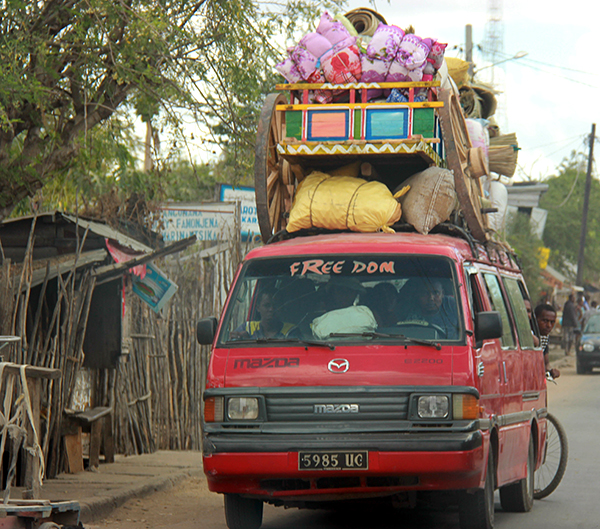
On the Ilakaka streets. R. Zeilstra photo.
Kids playing on dumps. E. Petrides photo.
Kids playing on dumps. E. Petrides photo.
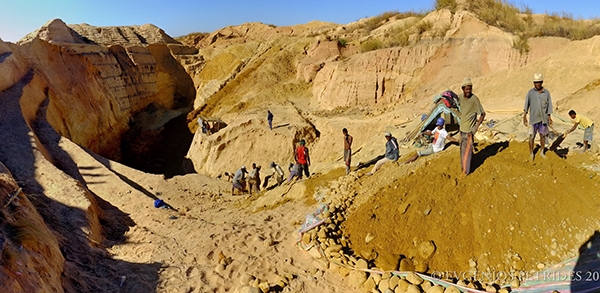
One of the sapphire mines which we visited. E. Petrides photo.
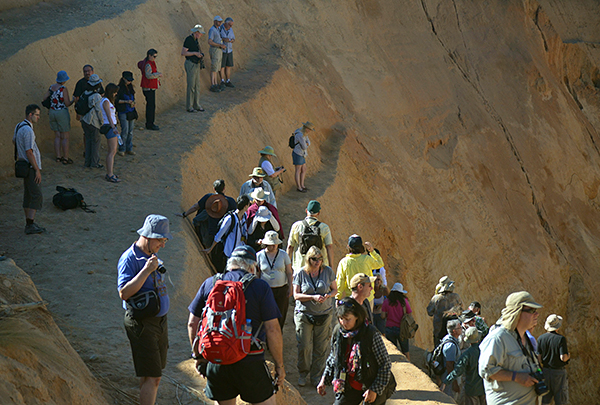
Our group watching mining process. N. Anstee photo.
Mine is really very deep! M. Ng photo.
Mining is very chaotic. K. Doxsee photo.
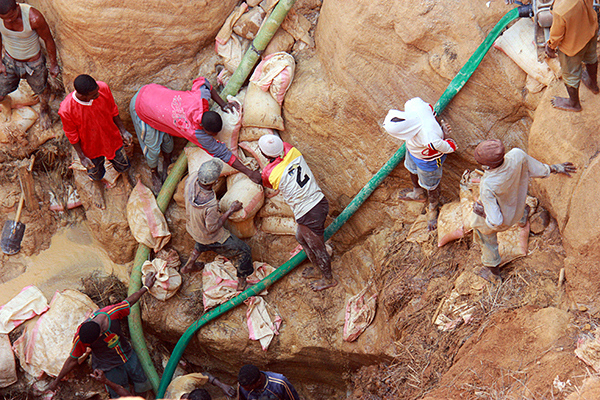
Mining is very chaotic. R. Zeilstra photo.

Mined material is washed in the rivers, together with laundry, car wash cloth etc. R. Zeilstra photo.
Gem garnets. E. Petrides photo.
Pink sapphires. E. Petrides photo.
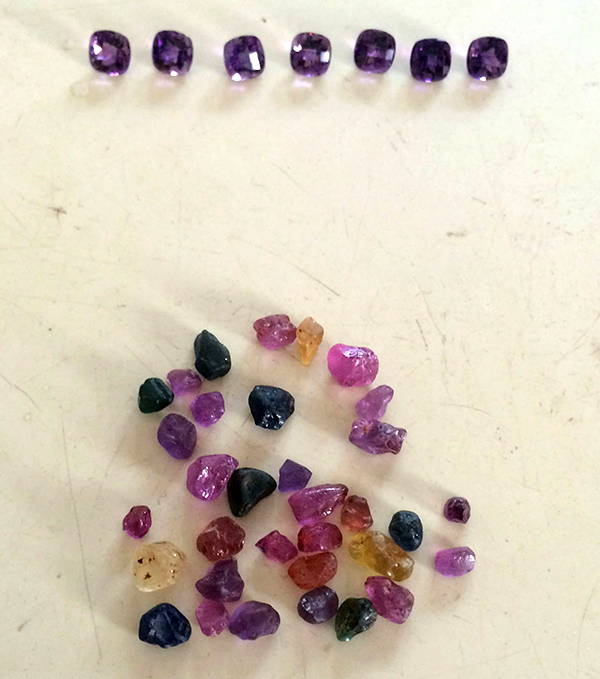
Colorful raw sapphires and cut amethysts. T. Praszkier photo.
Colorful sapphires typical for Ilakaka deposit. M. Ng photo.
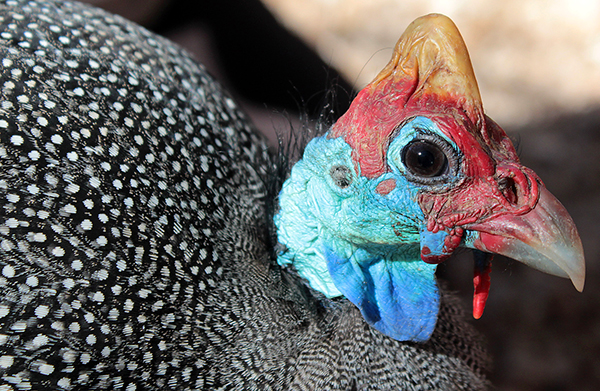
Small zoo in the local sapphire shop. R. Lang photo.
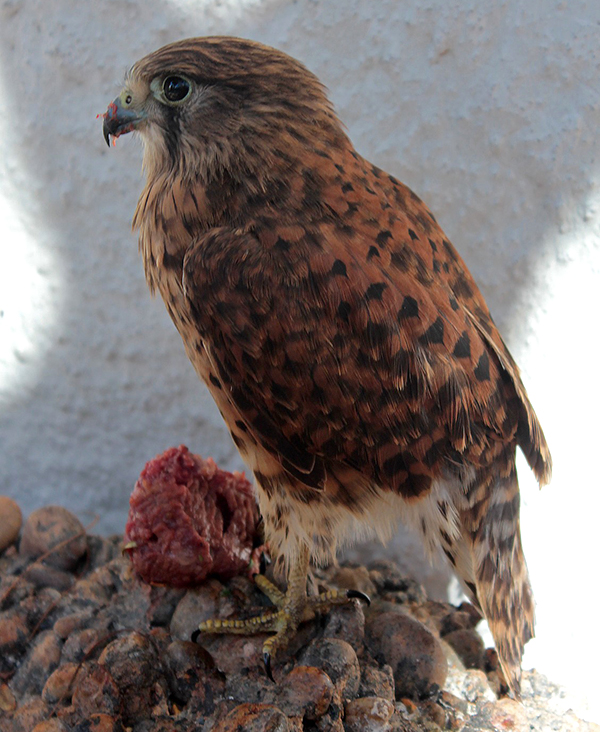
Falcon in the small zoo in the local sapphire shop. R. Lang photo.
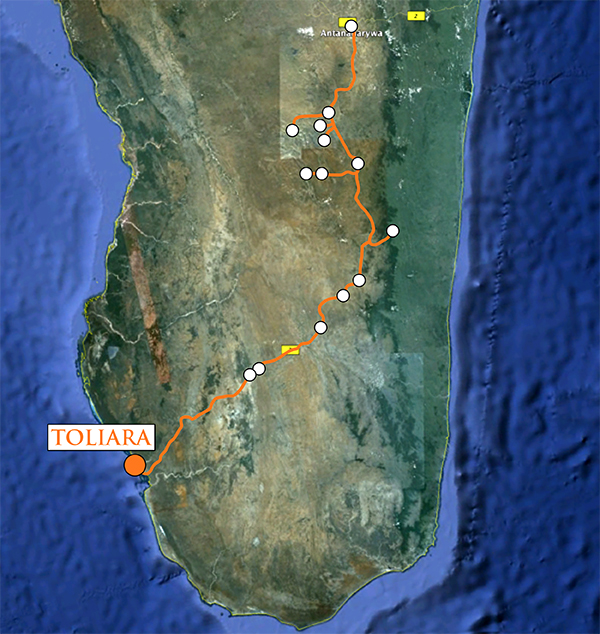
After Ilakaka we drove to Toliara at the Western coast. Google Maps.
Road to Toliara. E. Petrides photo.
Traditional tombs in the area. M. Ng photo.
There is a great arboretum near Toliara which we visited. The climate here is semi-desert with almost only endemic plants. M. Ng photo.
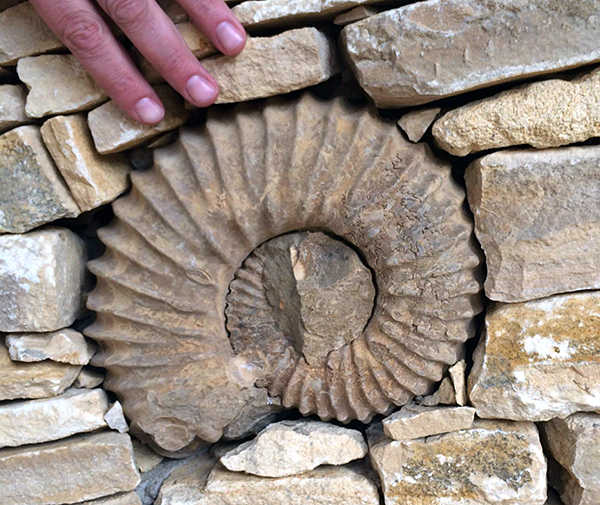
Ammonite in the arboretum wall. T. Praszkier photo.
Egg of Aephiornis, the world’s biggest known bird, which went extinct about 200 years ago. E. Petrides photo.
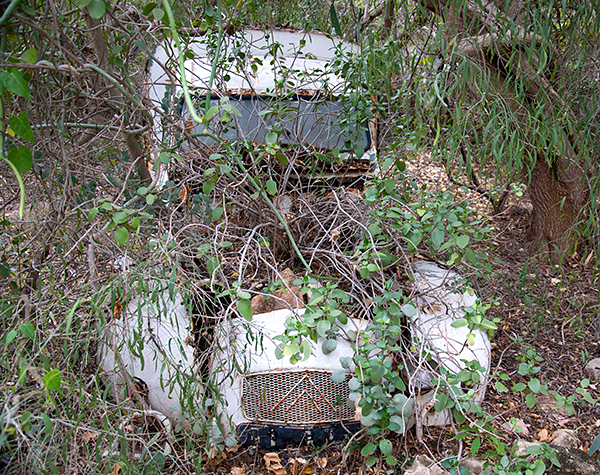
In the arboretum. C. Voogt photo.
Endemic Didiereaceae in the arboretum. M. Southwood photo.
Endemic Didiereaceae in the Arboretum. M. Ng photo.
Endemic plants in arboretum. S. Szlinke photo.
Endemic plants in the arboretum. M. Ng photo.
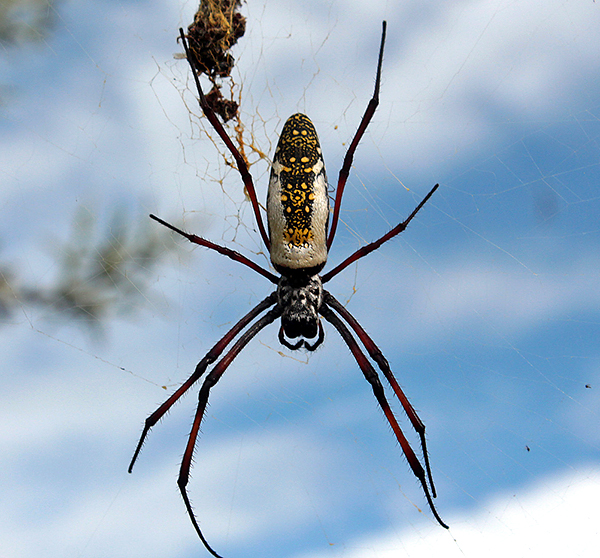
Big spider. R. Lang photo.
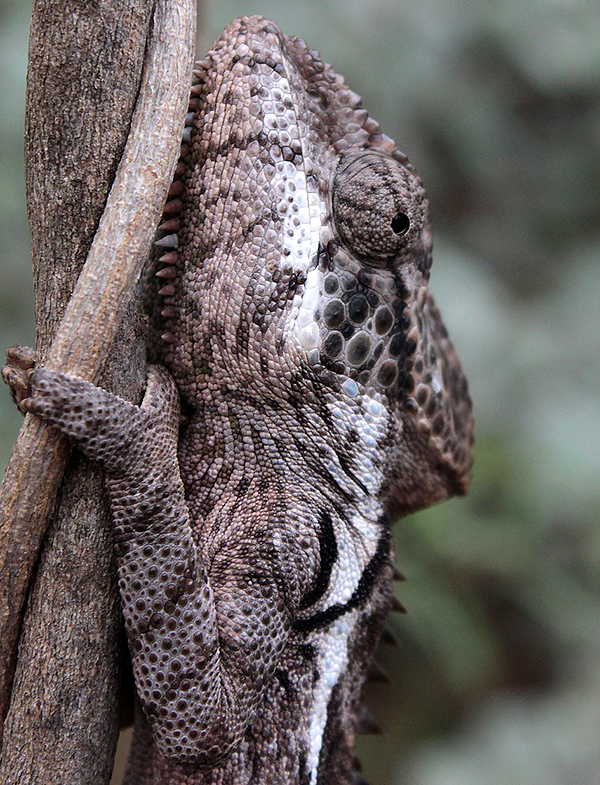
Chameleon in the arboretum. R. Lang photo.
Numerous Radiata turtles. K. Luk photo.
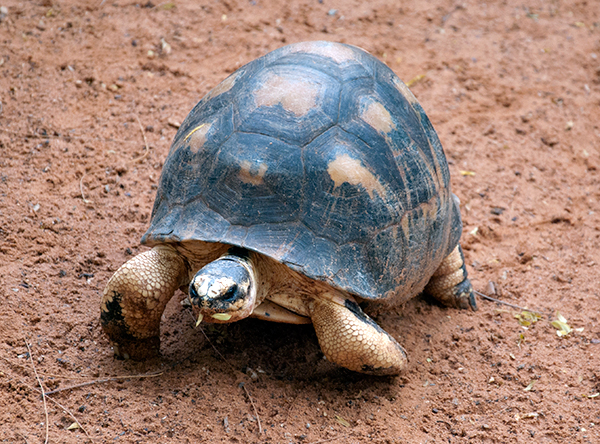
Radiata turtle. C. Voogt photo.
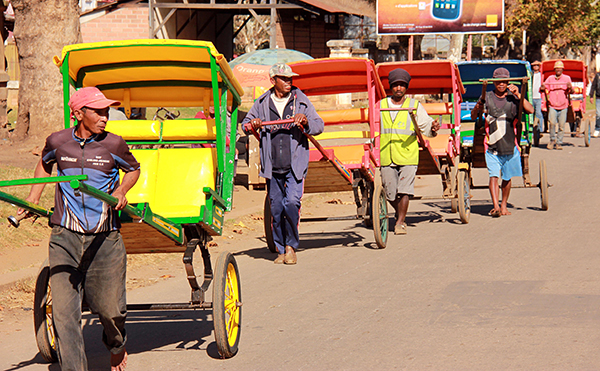
Rickshaws on the Toliara streets. R. Zeilstra photo.
Rickshaws on the Toliara streets. E. Petrides photo.
Rickshaws on the Toliara streets. E. Petrides photo.
Liquor store in Toliara. E. Petrides photo.
In Toliara. E. Petrides photo.
In Toliara. E. Petrides photo.
In Toliara. M. Ng photo.
In Toliara. E. Petrides photo.
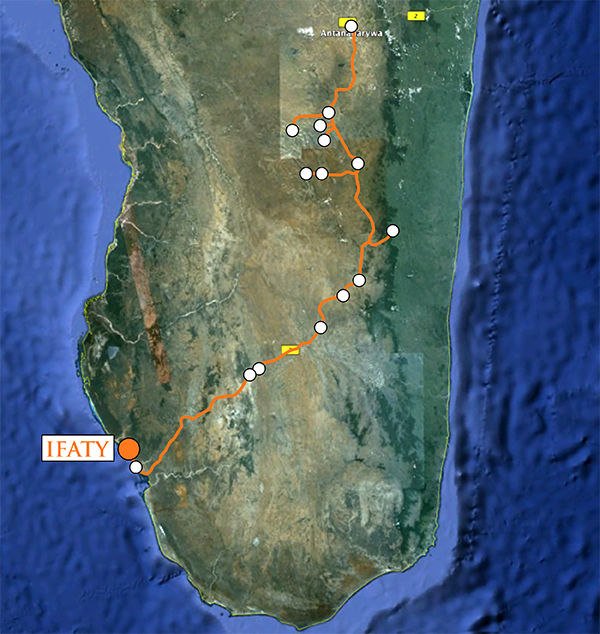
After lunch we drove to our destination for the next 2 days, nice resort on the beach. Google Maps.
But before that we changed our transportation mode ... S. Szlinke photo.
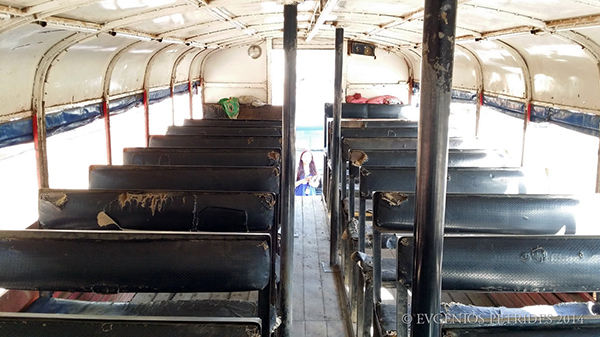
... majority of the people thought it was a joke. E. Petrides photo.
But it wasnt! This truck was our transport for the next 2 days! L. Albin photo.
It was very crowded. E. Petrides photo.
Buying some souvenirs from the truck. E. Petrides photo.
Buying some rocks from the truck. E. Petrides photo.
Buying some rocks from the truck. E. Petrides photo.
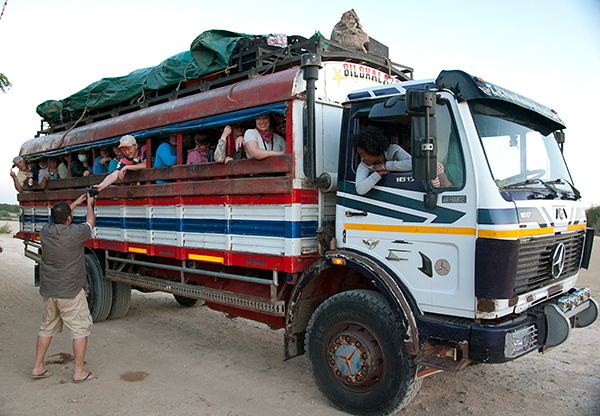
OK, time to go! C. Voogt photo.
Truck is on its way! Just short stop for rum delivery :-) T. Praszkier video.
Finally when we arrived to the hotel. L. Albin photo.
Time to relax! E. Petrides photo.
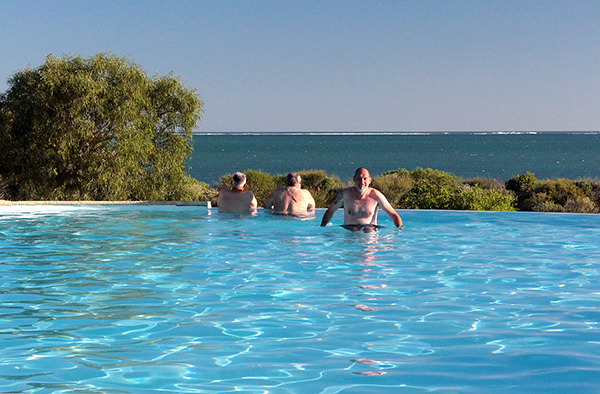
Time to relax! R. Lang photo.
Leslie enjoying relax time. L. Albin photo.
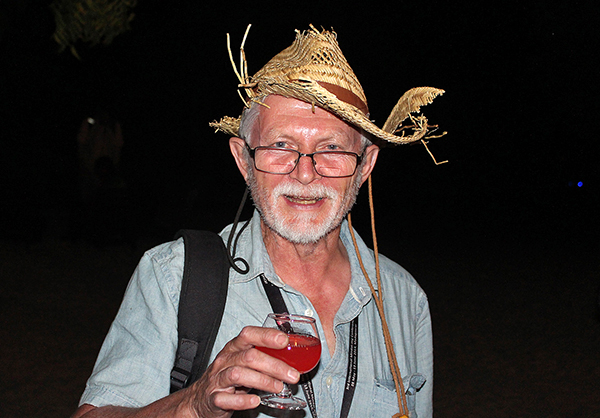
Pete Nancarrow found this great hat on the beach :-) R. Lang photo.
Dinner is ready. M. Yu photo.
That evening we enjoyed a very special show - Boloco Malagasy! E. Petrides photo.
Bloco Malagasy playing on the beach with bonfire. E. Petrides photo.
Bloco Malagasy playing on the beach with bonfire. S. Szlinke photo.
And here we go! Mindat dancers on the beach. M. Ng photo.
Bloco Malagasy playing for us. T. Praszkier video.
Bloco Malagasy playing for us. T. Praszkier video.
| Comments |
NEW ARTICLES
TRAVELS & ARTICLES
- Pyrite find in Finland
- Mineral notes: New zircons and pyrochlores from Morocco
- Mineral notes: New natrolites from Morocco
- Mineral pottery by Dr. Justyna Domańska-Siuda
- Calcites from Malaysia
- Veszelyites and other minerals from Congo
- Travelling through Arizona & New Mexico, USA
- Halites from the Solno Salt Mine, Poland
- Secondary minerals from Maramureș, Romania
- Calcites from Grabiszyce Quarry, Poland
OUR PUBLICATIONS
- "Fluorites from Taourirt, Morocco" in Mineralogical Almanach
- "Calcites from Grabiszyce, Poland" in LRM 2018
- "Baryte" article in the extraLapis
- MINERALS - The Collectors Newspaper #9
- MINERALS - The Collectors Newspaper #8
- Solno halites article in the Mineralogical Record
- MINERALS - The Collectors Newspaper #7
- MINERALS - The Collectors Newspaper #6
- Mibladen monograph in the Mineralogical Record
- African Secrets book